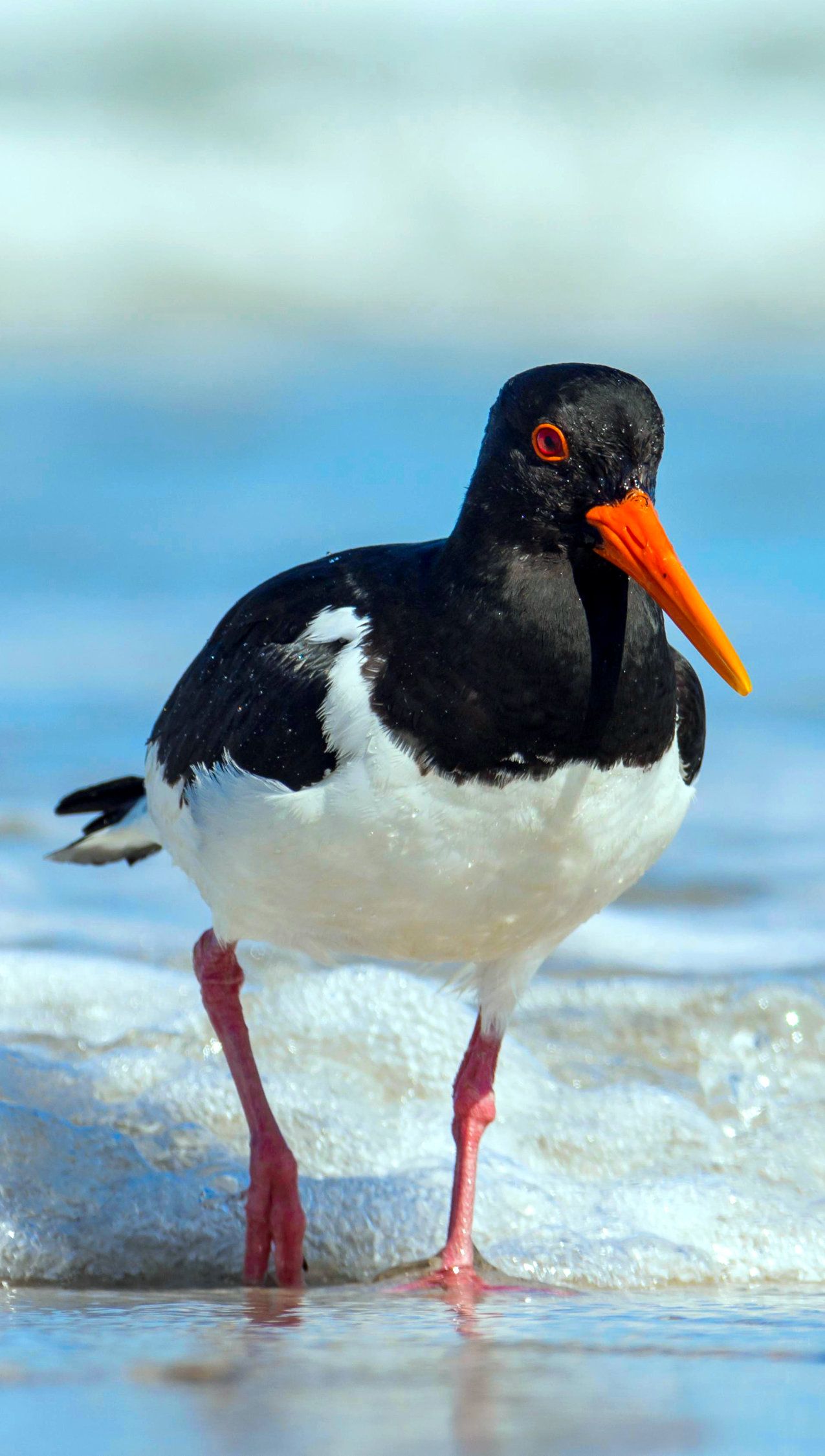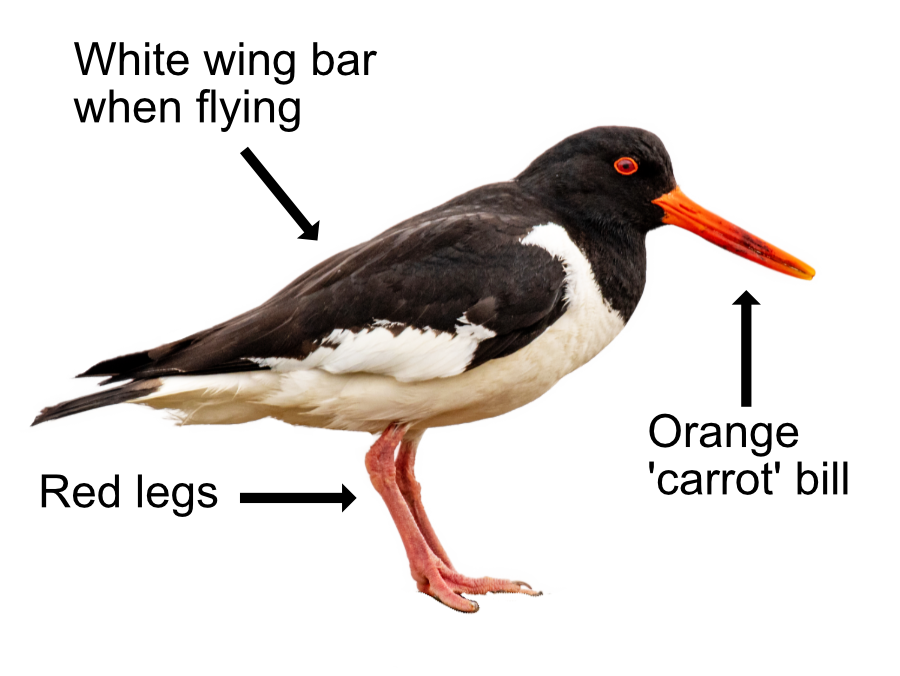
The Oystercatcher is a distinctive black and white wader with a big orange carrot stuck on its head. We call them 'Carrot-Heads'. Despite its name, they don’t feed that much on oysters. Though, with their powerful bill, they can open them. Large flocks form in winter and can be seen and heard around most of the British coast.

The Oystercatcher is one of our largest waders with long red legs and a long orange-red bill. It has a broad white wing bar on its black wings when flying and a white 'V' on its rump. They can develop a white 'chinstrap' in winter. An Oystercatcher moults its flight feathers symmetrically, never more than two at a time, so it can always fly. The young look similar but have brown fringes to the feathers on their back. The call is a strident, piping "k-peep! k-peep!" and is hard to miss as they whizz by.
Oystercatchers feed mostly on shellfish, especially cockles, which they prise or jab open with their powerful bill. They will also eat worms, limpets and mussels. Depending on their family's food preference, their bill shape varies. Oystercatchers with broad bill tips open molluscs by prising them apart or hammering through the shell. Ones with a more pointed-bill dig up worms. Individual birds specialise in one technique or the other, which they learn from their parents.
When establishing breeding territories, they put on an impressive piping display and sometimes up to thirty Oystercatchers will come together in 'piping parties' as they fly side-by-side, calling loudly. They nest in the open on the ground on moorland or shingle beaches. Recently some have nested on inland gravel pits. Their 3 eggs hatch after 24 days and both parents feed the youngsters, which can fly 28 days later. They are not fully independent until 26 weeks old. The Oystercatcher parents differ from most waders by feeding their young instead of letting them fend for themselves. In the winter, they leave their inland breeding sites and move to the coast, some travelling as far as Southern Europe.
There are 110,000 summer breeding pairs in Britain, with most located from the Pennines northwards. In winter, further birds arrive from Iceland, Norway and Northern Europe, swelling the numbers to 340,000. They are mainly found on the coast, especially where there are not too many people to make fun of their carrot heads. Icelandic and Scottish birds generally winter on the west coast whereas European birds prefer the east coast. Oystercatchers return to their breeding territories in March. They are Amber listed as numbers have fallen in recent years. Because of their large numbers and easily identified behaviour Oystercatchers are an important indicator species for the health of the ecosystems where they feed. The oldest ringed bird lived to a ripe old age of 35.
Their Latin name is 'haematopus ostralegus' from the Ancient Greek 'haima' for 'blood' and 'pous' for 'foot', referring to their red legs. The 'ostralegus' comes from the Latin 'ostrea' meaning 'oyster' and 'legere' meaning 'to gather'. A red-legged oyster gatherer. Mark Catesby gave them the English name 'Oystercatcher' in 1731 when he thought he saw them eating oysters. Eyesight wasn’t good in those days.